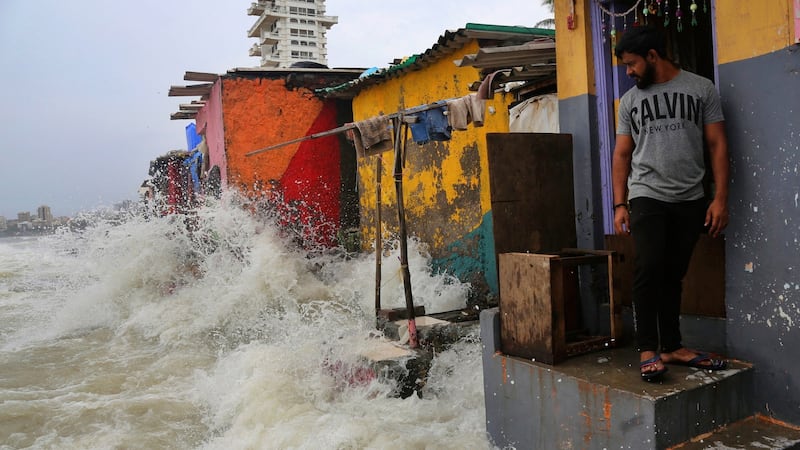Mumbai on Wednesday was reeling from the heaviest monsoon rains in more than a decade that flooded parts of the city and surrounding region, killing more than 80 people and partially closing the international airport in India's financial capital.
India Meteorological Department figures on Tuesday evening showed the city received a total of 375mm of rainfall on the day – the highest since deadly rains in 2005 that were the worst in Mumbai's history.
Highlighting India’s failing infrastructure, the flooding forced Mumbai’s city government to declare a public holiday on Tuesday while more than 100 flights were cancelled at its international airport after a SpiceJet plane overshot the runway as it landed in a torrential downpour.
The city’s municipal corporation, one of India’s wealthiest, has come under heavy criticism for failing to prepare adequately for the monsoon, prompting the body to appeal to residents on Twitter by saying “we are truly trying our best”.
The rains highlight the pressure on the government of Narendra Modi, India’s prime minister who won a second term in May, to improve infrastructure and India’s ability to deal with annual monsoon rains.
India has more people affected by river flooding than any other country in the world, according to the World Resources Institute.
In Mumbai, unregulated development and breakneck population growth have strained the city’s natural flood defences, according to researchers at the WRI, who highlight the loss of the city’s mangrove forests as a factor in the flooding.

On Tuesday, the city’s usually frenetic streets remained vacant for much of the day. Residents quickly gave up on their daily commutes because some trains stopped running, while many shops and offices did not open.
Slum wall collapses
Officials said those who died in Mumbai and the surrounding region included 24 who were killed as a wall collapsed on slum dwellings in the suburb of Malad, and two who drowned as their car was submerged in the floods. Rescue operations were under way across the city on Wednesday after the Indian Navy was called in to support authorities’ efforts.
Flooding also hit nearby districts including Ratnagiri, where a dam collapsed late on Tuesday, with local media reporting that the death toll there had reached nine.
The rains over the three days represented the "second-highest rainfall in 45 years", according to Devendra Fadnavis, chief minister of Maharashtra state, adding that the city government and police were "on continuous alert and working 24/7 to give all assistance" to residents.
But Jaiveer Shergill, spokesman for the opposition Indian National Congress, blamed the city's woes on the "consistent neglect" of Mr Fadnavis's ruling Bharatiya Janata party-Shiv Sena government.
“Misgovernance and mismanagement has completely sunk the infrastructure of the city, leading to utter chaos,” said Mr Shergill.
Climate change, which is altering rainfall patterns across the world, is increasing the likelihood of such extreme weather events in India. Researchers estimate that the risk of rainfall as extreme as the record 2005 monsoon, when more than 500 were killed, is set to double by 2080. Rises in sea levels are also expected to contribute to flooding.
The heavy rainfall in India's business centre comes as the country's sixth-largest city, Chennai, contends with a severe drought. Water reserves in the southern city of 9m people have run dry, forcing businesses and households to adopt stringent conservation measures, and igniting conflicts between residents over access to water. – Copyright The Financial Times Limited 2019












